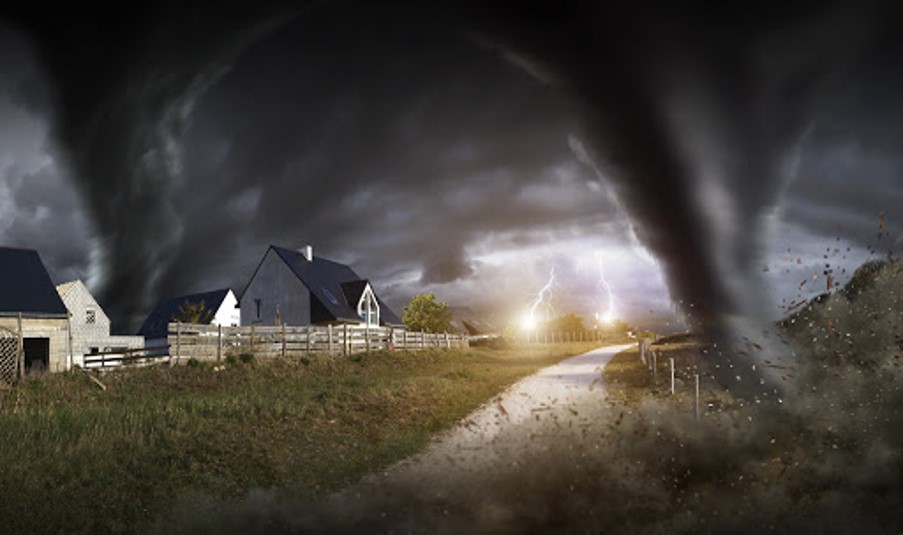Stages of Tornadoes
Tornado life cycle typically consists of 3 stages:
- Stage 1 – Storm development. Sunshine heats the ground which in turn heats the air near ground level.
- Stage 2 – Storm organisation
- Stage 3 – Tornado formation
Day or night – Loud, continuous roar or rumble, which doesn’t fade in a few seconds like thunder. Night – Small, bright, blue-green to white flashes at ground level near a thunderstorm (as opposed to silvery lightning up in the clouds). These mean power lines are being snapped by very strong wind, maybe a tornado.
- Dust-Whirl Stage. Dust swirling upwards from the ground and grows toward the funnel cloud in the sky.
- Organizing Stage. Downward extend of funnel and “connection” with dust-whirl on the ground.
- Mature Stage. Tornado on the ground.
- Shrinkage Stage.
- Decaying Stage.
And then actually even the smell of tornadoes – if you’re in the right place, you get a strong odor of fresh-cut grass, or occasionally, if it’s destroyed a house, natural gas. Sometimes you get that raw earth smell, similar to if you run a bulldozer over open land.
A tornado is a violently rotating column of air that is in contact with both the surface of the Earth and a cumulonimbus cloud or, in rare cases, the base of a cumulus cloud.
Tornadoes form when warm, humid air collides with cold, dry air. The denser cold air is pushed over the warm air, usually producing thunderstorms. The warm air rises through the colder air, causing an updraft. When it touches the ground, it becomes a tornado. Identifying nature’s dangerous whirlwinds:
- Rope tornadoes.
- Cone tornadoes.
- Wedge tornadoes.
- Multi-vortex and satellite tornadoes.
- Waterspouts and land spouts.

